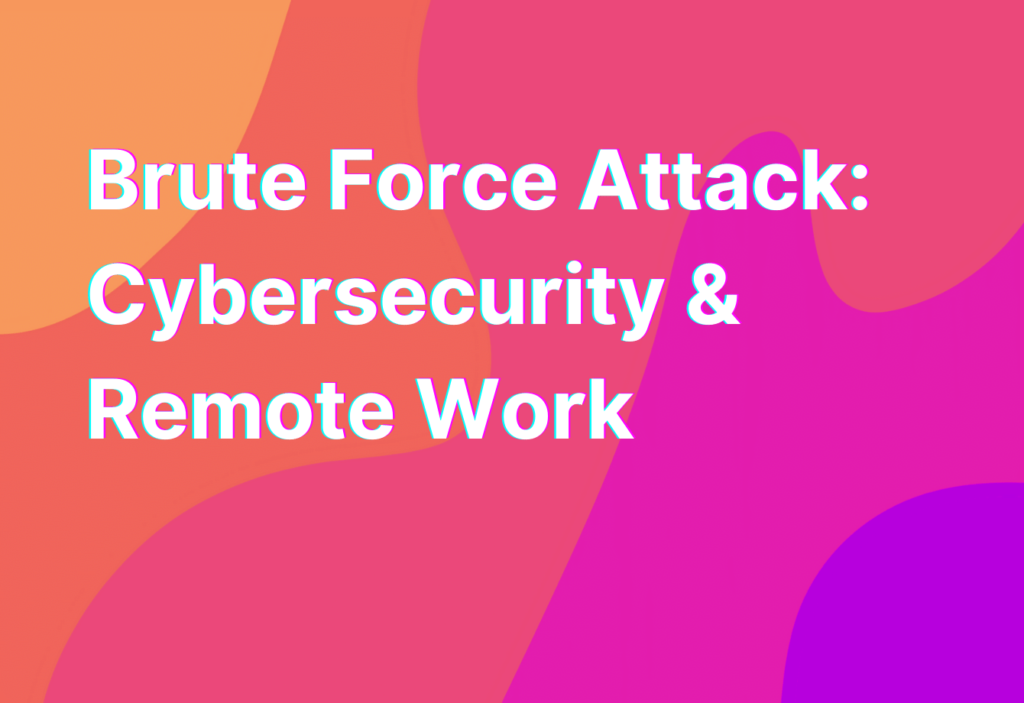Brute Force Attack: Cybersecurity & Remote Work
Hey there, remote work warriors! It’s Ashley here, your friendly neighborhood remote work advocate. Today, I want to talk about a topic that might make you want to double-check your cybersecurity measures: brute force attacks. Don’t worry, though, I’ve got your back with some tips and tricks to keep your remote work setup secure. So, grab your favorite cup of coffee and let’s dive in!
What is a Brute Force Attack?
Before we get into the nitty-gritty details, let’s start with the basics. A brute force attack is a hacking technique where an attacker tries every possible combination of passwords or encryption keys until they find the correct one. It’s like trying every key in the world until you find the one that unlocks the door. Sneaky, right?
These attacks can be particularly dangerous for remote workers because they often rely on weak passwords or outdated security measures. As remote work becomes more prevalent, it’s crucial to stay one step ahead of the cybercriminals.
How Does a Brute Force Attack Work?
Now that we know what a brute force attack is, let’s take a closer look at how it actually works. Imagine you have a virtual lock on your front door, and the attacker wants to break in. They start by trying every possible combination of numbers, letters, and symbols until they find the right one.
It’s like playing a game of “guess the password” on steroids. The attacker uses automated software that can try thousands, or even millions, of combinations per second. They can also use a technique called a dictionary attack, where they try common words or phrases as passwords.
Once the attacker successfully cracks your password, they can gain unauthorized access to your accounts, steal sensitive information, or even take control of your entire system. Yikes!
Protecting Yourself from Brute Force Attacks
Now that we understand the potential risks, let’s talk about how you can protect yourself from brute force attacks. Here are some essential tips to keep in mind:
- Use Strong and Unique Passwords: I know, I know, it’s tempting to use the same password for all your accounts. But trust me, it’s a recipe for disaster. Create strong, complex passwords that include a mix of uppercase and lowercase letters, numbers, and special characters. And please, don’t use “password123” as your go-to!
- Enable Two-Factor Authentication (2FA): Adding an extra layer of security with 2FA can make a world of difference. It requires you to provide a second form of verification, such as a fingerprint scan or a unique code sent to your phone, in addition to your password.
- Keep Your Software Updated: Software updates often include security patches that fix vulnerabilities. Make sure you regularly update your operating system, antivirus software, and any other applications you use for remote work.
- Limit Login Attempts: Many platforms and websites allow you to set up login attempt limits. By restricting the number of failed login attempts, you can make it harder for attackers to guess your password.
- Use a Virtual Private Network (VPN): A VPN encrypts your internet connection, making it more difficult for attackers to intercept your data. It’s like wearing an invisibility cloak while browsing the web!
These are just a few of the many steps you can take to protect yourself from brute force attacks. For more in-depth information on cybersecurity and remote work, check out this link. It’s a treasure trove of valuable insights and practical advice.
Wrapping Up
Well, folks, we’ve reached the end of our cybersecurity journey. Remember, remote work can be amazing, but it also comes with its fair share of risks. By implementing strong passwords, enabling 2FA, keeping your software updated, limiting login attempts, and using a VPN, you can significantly reduce the chances of falling victim to a brute force attack.
Stay safe out there, my fellow remote work superheroes! And as always, if you have any questions or need further assistance, feel free to reach out. Until next time!


